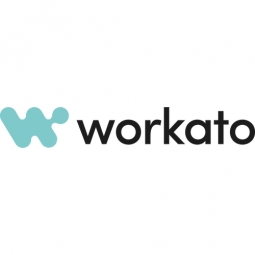Customer Company Size
Mid-size Company
Region
- America
Country
- United States
Product
- Workato
- Salesforce
- Zendesk
- Toast POS
Tech Stack
- Cloud-based Apps
- Android-based Software
Implementation Scale
- Enterprise-wide Deployment
Impact Metrics
- Productivity Improvements
- Customer Satisfaction
- Digital Expertise
Technology Category
- Platform as a Service (PaaS) - Connectivity Platforms
- Application Infrastructure & Middleware - API Integration & Management
Applicable Industries
- Retail
- Food & Beverage
Applicable Functions
- Sales & Marketing
- Business Operation
Use Cases
- Process Control & Optimization
- Remote Asset Management
Services
- System Integration
- Software Design & Engineering Services
About The Customer
Toast is a company that provides a point-of-sale and restaurant management system, primarily targeting the food and beverage industry. Their Android-based Point of Sale software is designed to help restaurants, nightclubs, and enterprise franchises operate more efficiently and connect with their customer base in innovative ways. Toast's system is used by a growing list of clients who benefit from its modern, all-in-one solution that replaces outdated POS systems. The company leverages cloud-based apps like Salesforce, Zendesk, and QuickBooks to better serve the evolving needs of its customers, providing them with analytic-enabled tools to enhance their operations.
The Challenge
Toast faced a challenge where their sales representatives used Salesforce while their support representatives used Zendesk. The existing standard connector lacked the customization options needed to meet Toast's specific workflows. This disconnection led to inefficiencies, as teams had to manually transfer data between systems, analyze it in Excel, and then re-enter it into another system. This process was time-consuming and prone to errors, causing delays in obtaining necessary reports and analyses. Toast needed a solution that could seamlessly integrate these systems to improve efficiency and reduce the time spent on manual data handling.
The Solution
Toast implemented Workato to integrate Salesforce and Zendesk using three custom recipes. This integration allowed sales and support representatives to have full control over client information, enabling efficient data syncing between the two apps. The deployment of Workato eliminated the need for manual data transfers and the use of Excel as an intermediary, automating the entire process. This solution provided a customized integration that met Toast's specific needs, offering a turnkey solution that was easy to use without requiring programming skills. The integration also included error logs for troubleshooting and support from the Workato community, enhancing the overall user experience.
Operational Impact
Quantitative Benefit

Case Study missing?
Start adding your own!
Register with your work email and create a new case study profile for your business.
Related Case Studies.

Case Study
The Kellogg Company
Kellogg keeps a close eye on its trade spend, analyzing large volumes of data and running complex simulations to predict which promotional activities will be the most effective. Kellogg needed to decrease the trade spend but its traditional relational database on premises could not keep up with the pace of demand.

Case Study
HEINEKEN Uses the Cloud to Reach 10.5 Million Consumers
For 2012 campaign, the Bond promotion, it planned to launch the campaign at the same time everywhere on the planet. That created unprecedented challenges for HEINEKEN—nowhere more so than in its technology operation. The primary digital content for the campaign was a 100-megabyte movie that had to play flawlessly for millions of viewers worldwide. After all, Bond never fails. No one was going to tolerate a technology failure that might bruise his brand.Previously, HEINEKEN had supported digital media at its outsourced datacenter. But that datacenter lacked the computing resources HEINEKEN needed, and building them—especially to support peak traffic that would total millions of simultaneous hits—would have been both time-consuming and expensive. Nor would it have provided the geographic reach that HEINEKEN needed to minimize latency worldwide.

Case Study
Improving Production Line Efficiency with Ethernet Micro RTU Controller
Moxa was asked to provide a connectivity solution for one of the world's leading cosmetics companies. This multinational corporation, with retail presence in 130 countries, 23 global braches, and over 66,000 employees, sought to improve the efficiency of their production process by migrating from manual monitoring to an automatic productivity monitoring system. The production line was being monitored by ABB Real-TPI, a factory information system that offers data collection and analysis to improve plant efficiency. Due to software limitations, the customer needed an OPC server and a corresponding I/O solution to collect data from additional sensor devices for the Real-TPI system. The goal is to enable the factory information system to more thoroughly collect data from every corner of the production line. This will improve its ability to measure Overall Equipment Effectiveness (OEE) and translate into increased production efficiencies. System Requirements • Instant status updates while still consuming minimal bandwidth to relieve strain on limited factory networks • Interoperable with ABB Real-TPI • Small form factor appropriate for deployment where space is scarce • Remote software management and configuration to simplify operations

Case Study
Energy Management System at Sugar Industry
The company wanted to use the information from the system to claim under the renewable energy certificate scheme. The benefit to the company under the renewable energy certificates is Rs 75 million a year. To enable the above, an end-to-end solution for load monitoring, consumption monitoring, online data monitoring, automatic meter data acquisition which can be exported to SAP and other applications is required.

Case Study
Coca Cola Swaziland Conco Case Study
Coco Cola Swaziland, South Africa would like to find a solution that would enable the following results: - Reduce energy consumption by 20% in one year. - Formulate a series of strategic initiatives that would enlist the commitment of corporate management and create employee awareness while helping meet departmental targets and investing in tools that assist with energy management. - Formulate a series of tactical initiatives that would optimize energy usage on the shop floor. These would include charging forklifts and running cold rooms only during off-peak periods, running the dust extractors only during working hours and basing lights and air-conditioning on someone’s presence. - Increase visibility into the factory and other processes. - Enable limited, non-intrusive control functions for certain processes.








